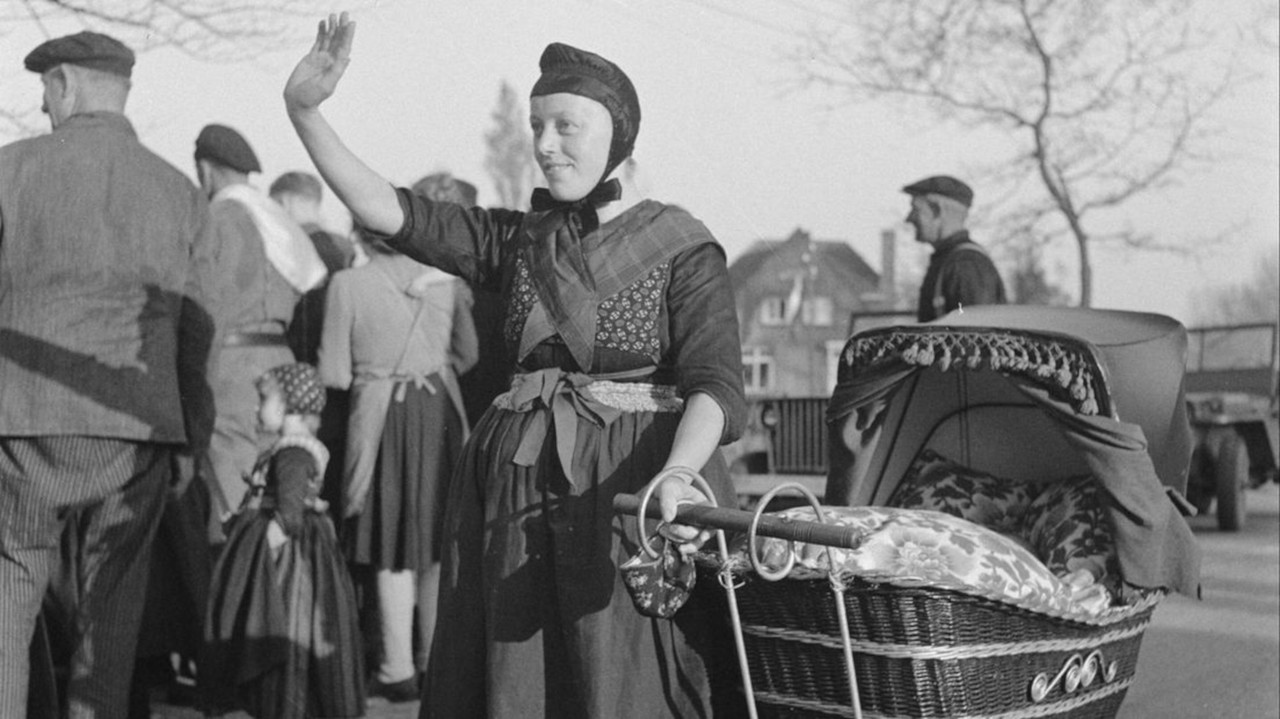On Friday, April 13th, 1945, Albert Hokse ran with his father, two brothers, and his sister to his grandfather’s house while bullets whizzed past overhead. Gunfire came from all directions, especially near “De Hoek,” the intersection where hotel-restaurant Waanders stood. Canadian and German troops clashed violently. Hotel Waanders burned to the ground, and many nearby homes were set ablaze.
Albert Hokse recalled:
"It was terrifying. The bullets flew through the trees, snapping off branches. The whole area was engulfed in flames. We kept low as we ran to my grandparents. They were already hiding in the cellar. We just made it in time."
He survived, but two other civilians did not.
Jan Harke was shot and killed while trying to rescue his bull during the crossfire. Berend Redder, the town messenger, was shot dead near the town hall.
After the resistance managed to request help from the 3rd Canadian Division, Staphorst was officially liberated the next day. Yet, the usual celebrations seen in other towns were absent here. The people of Staphorst were still mourning. A Nazi raid just months earlier had cast a long shadow—one even liberation could not lift.
That emptiness dated back to the night of August 30 to 31, 1944. That night, German troops went door to door across Staphorst, seemingly at random. It became one of the darkest chapters in the town’s history. Twenty randomly chosen men were dragged from their beds and deported to Camp Amersfoort. Among them was Hendrik Waanders, the owner of Hotel Waanders.
Retaliation
The raid was a reprisal for an attack carried out by the resistance on Commander Blom of the Beugelen labor camp—one of four such camps in the municipality of Staphorst. Blom survived the attack and, from his hospital bed, stated that the arrested men were not the perpetrators. In Staphorst, people assumed the men would be released soon. But things turned out differently.
On “Mad Tuesday,” September 6, 1944, another attack occurred—this time on Dutch SS officer Nicolaas van der Schatte Olivier in the woods near Staphorst. Two days later, the twenty men were put on transport to the Neuengamme concentration camp in Germany.
The conditions at the camp were horrific. Prisoners labored in a brick factory under brutal circumstances. Guards were unspeakably cruel. There was barely any food, and the barracks were overcrowded. According to survivors, Hendrik Waanders remained optimistic and proud of his family and his hotel. But the camp broke his health, he fell ill and died January 29, 1945, just before the liberation.
